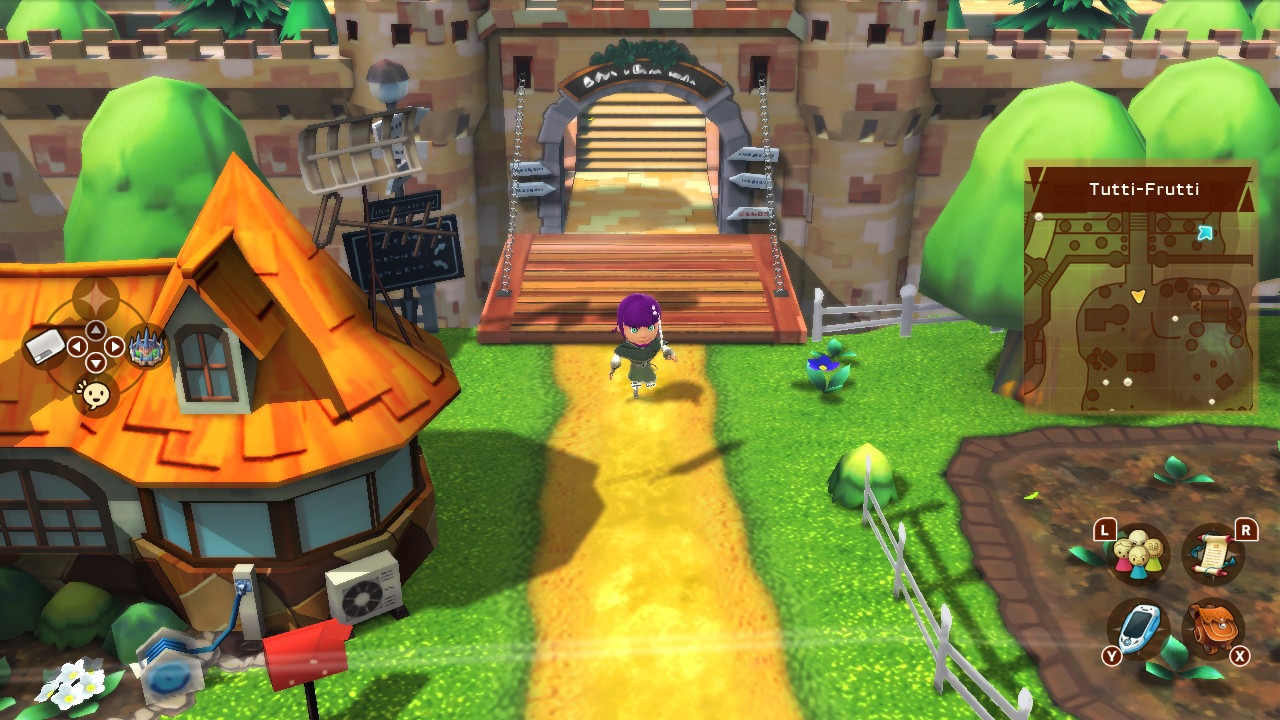
Some are described in the equipment details, while others have to be pieced together through guesswork and the silhouette in the costume gallery. The equipment list is even more varied, with one hundred sixty sets of costumes. Broken items are still useful as components for equipment upgrades, however, so there is some incentive to not conserving stuff. Every item has a charge time before it can be used, and this time increases with each subsequent use until the item eventually breaks. There are dozens of items to use, for healing or support, attack or defense, and several have environmental effects that can be used to access secrets in certain dungeons. What often makes or breaks a dungeon challenge is Yamada’s loadout. The difficulty can also be uneven, in keeping with the way that smartphone games ramp up the challenge to encourage more frustration with a level (and more microtransactions to bolster the player), and this is especially apparent in the last levels. It is also playable with a mouse or keyboard controls, though the latter is the less wieldy option.
#Dungeon no dungeon review full
These bonuses are lost in full if he is defeated, or in part if he chooses to run away at the start of a new floor.Īs mentioned above, this was originally a title for smartphones, and as such was designed with a certain style of touch controls in mind. Each floor panel passed over will fall into the digital void, so there is no walking back or crossing paths, but if he manages to traverse every possible tile he will receive a bonus of cash, materiel, or equipment. At the start of each floor, a route must be drawn for Yamada to follow on automatic, taking him around or through various treasures, traps, obstacles, or monsters along the way. The game itself is a rogue-lite, with the hero Yamada starting each dungeon at level 1, but with equipment and tools chosen by the player. Through forests, caves, and haunted mansions must the brave hero Yamada quest, so that eventually Yamada-kun might have a chance at a Happily Ever After with his cute next-door neighbor, Maria. As he sits at his desk, in his underwear, he debugs the levels by playing them, and the dividing line between the virtual and the real gets blurred and bent with great frequency. hackers who add new enemies with the intent of driving him nuts. The dungeons are levels in his game, created to work through his stress and personal issues, while occasionally being suborned by Empire Corp. The entirety of Dandy Dungeon takes place in Yamada’s apartment. five minutes into the game, but he’s determined to “channel this suck into videogame!” His life may suck, even before he is summarily and insultingly fired from Empire Corp. But he’s got a dream: to have the freedom and the courage to sit around in his underwear all day long, programming his vision of a perfect video game. By anyone’s measure, he’s a loser, and almost everyone in the game will say as much to his face on at least one occasion. He’s thirty-six, overweight, starting to lose his hair, with questionable hygiene, and living in a one-room apartment of unfortunate bachelorhood.
/cdn.vox-cdn.com/uploads/chorus_image/image/64891870/classes_intro_resized.0.jpg)
The titular character, Yamada-kun, is a game programmer who works for a subsidiary of the Empire Corporation, a monolithic business that seems to own and operate everything in Tokyo, but he’d be the first to admit that his life’s a mess. It also succeeds at being an incredibly meta experience that constantly pokes fun at itself, its genre, its creators, and more Japanese cultural touchstones than could be easily fit into the space of a single review. an easy to play smartphone title with simple controls and simpler narrative that provides fun gameplay well beyond the time it takes to complete its nominal main quest line.

Dandy Dungeon succeeds at being a game of its original milieu, i.e. This was a game from the same creative minds behind such oddities as Chulip, Chibi-Robo, and Moon: RPG Remix Adventure, so even though I was wary (and still am) of anything with a DMM Games logo, I figured this would be an interesting experience.
#Dungeon no dungeon review update
So when I heard that Dandy Dungeon: The Legend of Brave Yamada had had its sequel material included as a post-release update to the base game, I grabbed it. There had been enough of that this year as it was. In the dire summer of 2020, I had a need for something simple, something silly to play and enjoy without a heavy plot or pressing motivation.


 0 kommentar(er)
0 kommentar(er)
